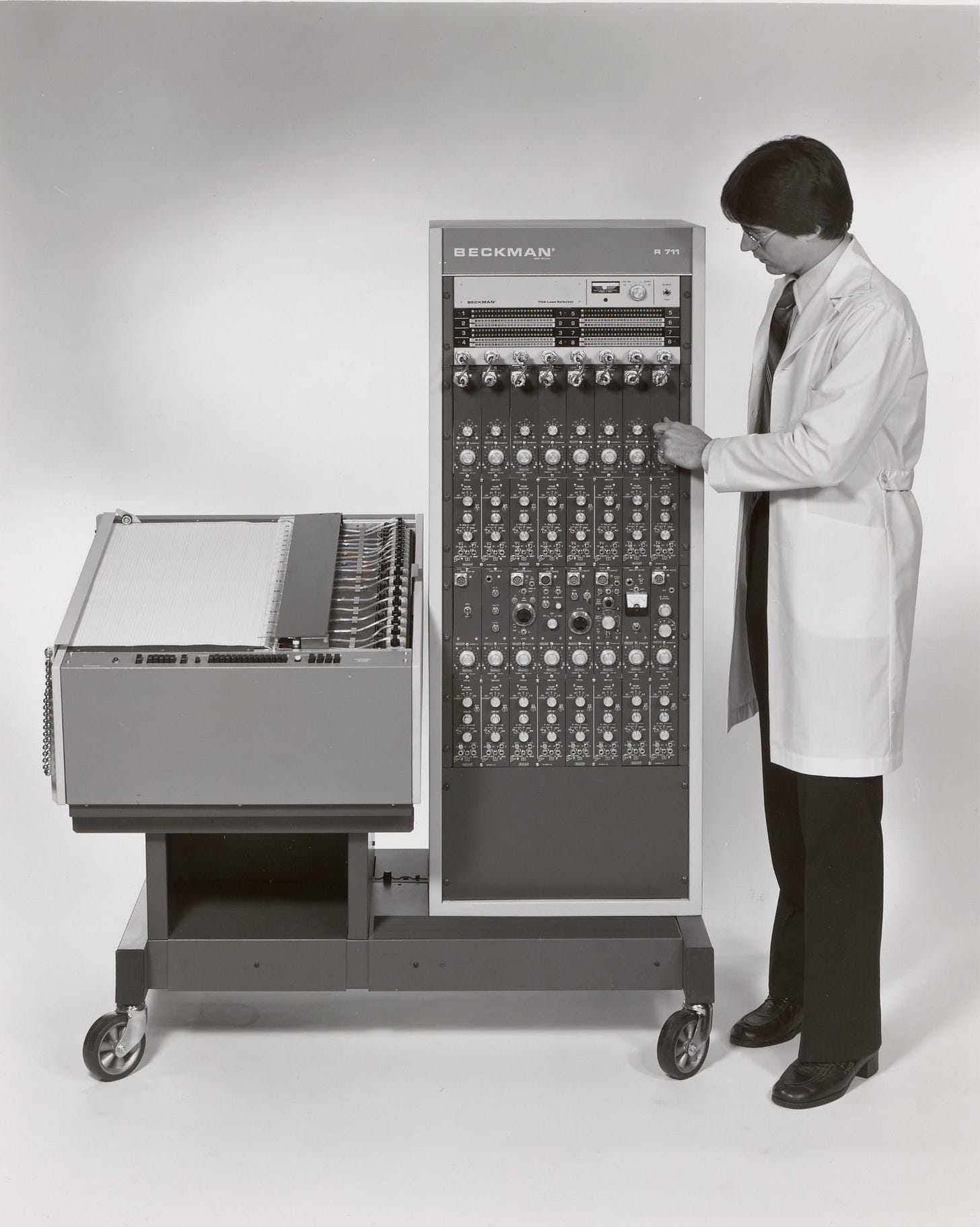Autonomic Diagnostics in the Innovation Lab
HRV is so last year...
THE BECKMAN MODEL R-711 DYNOGRAPH, GODFATHER OF YOUR SMART WATCH HRV SENSOR
In our next conversation for the Autonomics Innovation Lab we will explore autonomic diagnostics.
Most people with a smart watch (or ring) have moment-to-moment access to HRV (Heart Rate Variability) data, which is purported to be an accurate autonomic metric.
In this session of the lab, we will explore why this is not so.
We’ll examine
fundamental flaws in the algorithmic models of the ANS that render much of the data you are receiving from HRV inaccurate (oops)
why HRV was chosen in the first place in psychophysiology circles in the 1960s and 1970s (it is probably not for the reasons you would have thought, i.e., because it is the best signal)
what other autonomic signals might have been chosen, and what their selection might have revealed about the ANS (remember the Heisenberg Uncertainty Principles from Quantum Mechanics, the philosophical implications of which are that they way that you measure something governs what you perceive)
limitations of the autonomic parameters encoded in HRV and why not every autonomic signal is encoded there
what autonomic signals encode all autonomic parameters (there is a signal that does this)
anatomy and psychophysiology of the breathing Central Pattern Generator
what an autonomic diagnostics tool that utilized respiration as primary signal might be able to do…
The Autonomics Innovation Lab meets monthly, on the second Monday of the month, to chart the trans-disciplinary cutting edges of autonomic science.



